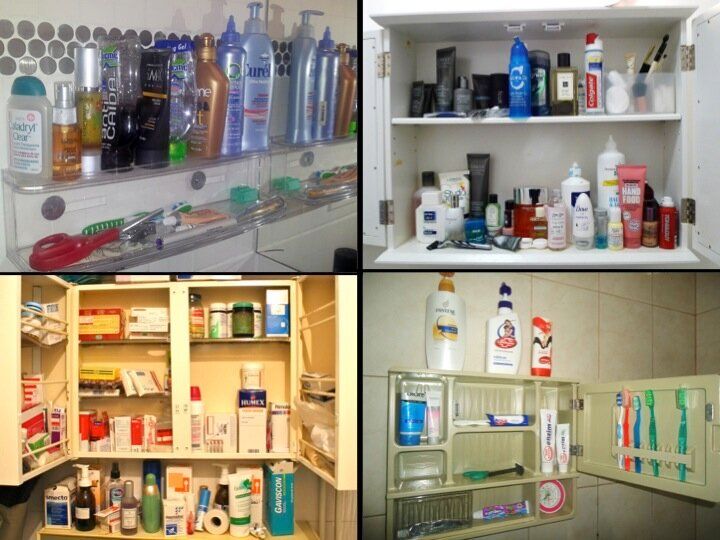Last month, our team published a photographic essay, Around the World in 80 Cabinets. The project invites you to peek inside bathroom cabinets around the world, from Australia to Uzbekistan. This is likely an invitation that few of us are able to resist. From hair lice treatments to stretch mark balms these cabinets are the home to revealing products that provide a glimpse into the personal lives and priorities of others.
When we began to collect the photographs, that initial thrill of peeping expired surprisingly quickly. Each cabinet seemed to offer only a slight re-configuration of all other cabinets: shelf after shelf of bottle after bottle after pot after pot. And since we are in the business of identifying truths for transformative action, we were a bit disappointed not to find any big bold truths staring at us from behind the looking glass. Instead, what we had on our screens was a series of photographs of a phenomenon so familiar as to appear banal.
This familiarity should have been our first clue that we were on the trail of a series of truths, from the naked to the beautiful. We might as well begin with a naked truth about bathroom cabinets: they're not very interesting in and of themselves (unless that of a potential lover or a very distant stranger). With few exceptions, everyone who is living today has had - or eventually will have - practical experience in assembling one for personal use.
But as we looked closer at the cabinets in our collection - some assembled on shelves, others on ledges, still others in drawers and some in boxes - we noticed that 'bathroom cabinets' are often not stored in bathrooms or cabinets. Instead, rather than how or where they are contained, 'bathroom cabinets' are defined universally by what they contain. And no matter the form of that container - whether a Burberry clutch or slab of concrete - the 'cabinet' always contains a dental tool, a detergent, and an ointment.
This trio of products indexes a beautiful truth shared across humanity. Over the course of millennia, we have collectively developed and affirmed a global understanding of a basic set of practices that implicate us in a global wellness program. With three items to hand, we are able to perform a routine wellness ritual: scrub, cleanse, and anoint - whether with a twig, some animal fat and vegetable oil, or with a sonic toothbrush, a pot of Lançome, and a bottle of essential orchid oils.
Of course, few truths are flawless. And seeking truths behind the looking glass is no exception. The ugly truth about bathroom cabinets is that although they are ubiquitous, they are hardly universal. And they are not universal because this basic wellness system depends entirely upon access to a clean water source. Today, 1 out of 10 people - that is, nearly 800 million people - do not have regular access to such a source and still another 1.5 billion people don't have access to adequate sanitation.
Consequently, the inability to fulfil the three-step ritual (scrub, cleanse, anoint) in a basic wellness program fuels a battalion of entirely preventable diseases - from oral caries to diarrhoea to malnutrition. According to UNESCO, "almost one-tenth of the global disease burden could be prevented by improving water supply, sanitation, hygiene and management of water resources" - a burden that the World Health Organization estimates at global cost of up to a staggering £345 billion.
What this amounts to is a clarion call for a transformative truth to be unlocked by a pioneering company, institution, or individual. And, if not already part of the common sense that supports innovative partnerships, the truths showcased in our collection of bathroom cabinets should inspire companies to support not only consumers in their personal care goals but also governments in their broader wellness goals.
Seeking the human truths that lurk behind the looking glass, or on the edge of the bathtub, leads to a rich treasure trove of insights whether you're a voyeur, marketer, designer, or simply a bathroom anthropologist. Pioneering brands, companies, and industry professionals in health, wellness, and beauty would also do well to notice what the looking glass reflects: we invite you to take a peek.
*This essay is based on findings drawn from two separate global studies by our team at McCann Truth Central: The Truth about Beauty (2012) and The Truth about Wellness (2013). We prepared our visual anthropology of bathroom cabinets for The Truth about Wellness. For more on this topic please click here. For details on methodology, respondent base, and executive summaries of the studies please visit: www.truthcentral.mccann.com
